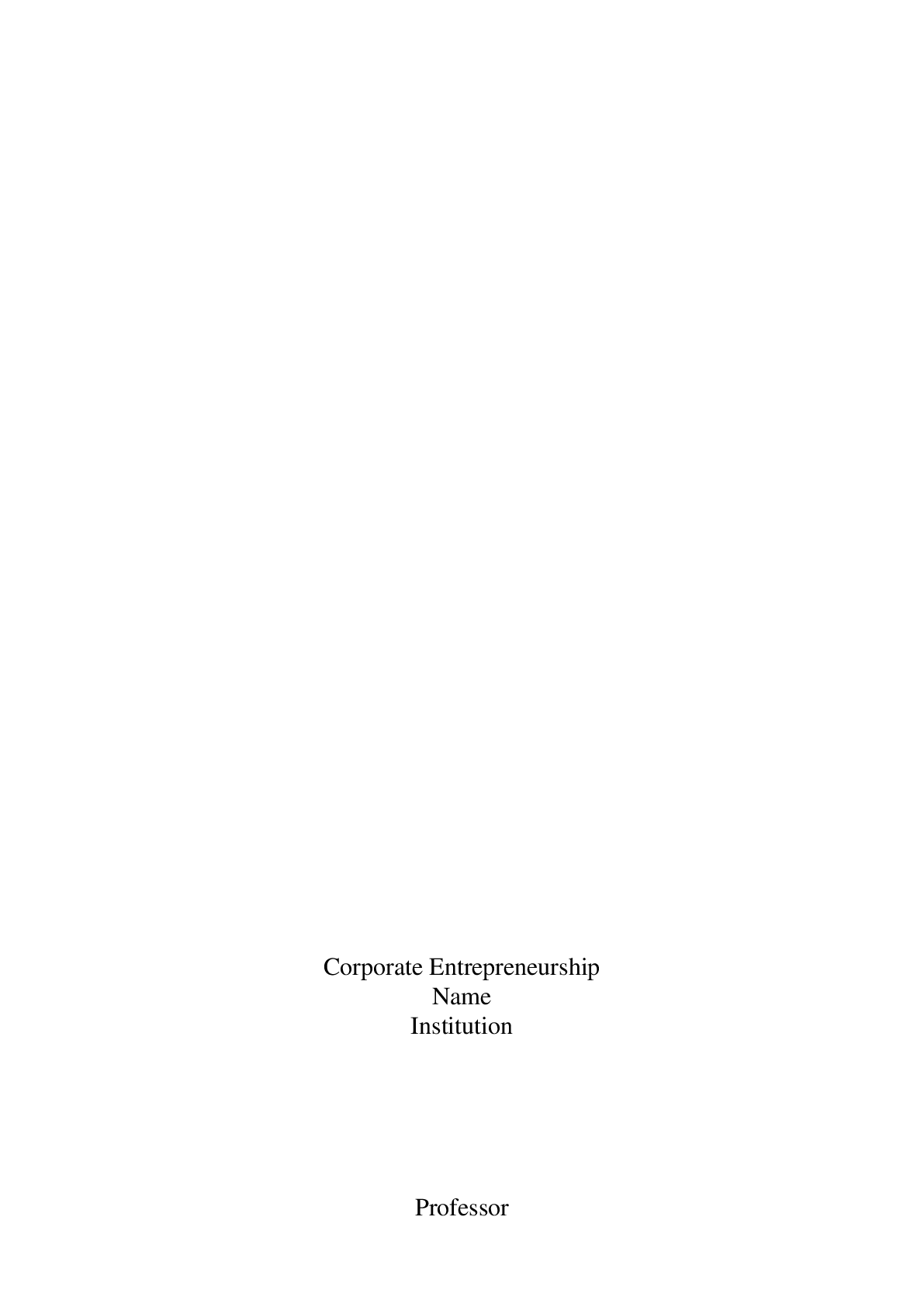Project Management > DISCUSSION POST > PROJ 410 Week 5 DQ 1 Human Resource Transitioning - Download Paper To Get A Pass (All)
PROJ 410 Week 5 DQ 1 Human Resource Transitioning - Download Paper To Get A Pass
Document Content and Description Below
Table of Contents 1. Title Page. 2. Table of Contents. 3. Section 1: Project Goals and Scope. 4. Section 2: Project Management Process. 5. Section 3: Requirements Management. 6. Sect... ion 4: Process and Product Quality Assurance. 7. Section 5: Software Development Methodology. 8. Section 6: Standards. 9. Section 7: Project Quality. 10. Section 8: Product Quality. 11. Section 9: Quality Checklist. 12. Section 10: Maintenance and Support. 13. References. Project Goals and Scope For an online store such as the one being built for this project the primary goal of the interface is to make a website that provides information for items that are going to be sold online, specifically a variety of nuts for this project. To do this, the project manager will provide a list of items that are to be sold and will format the website to offer details and information about each individual item. It will also include an interface that the user can interact with to produce the desired mix of nuts in the size bag that they have selected. The user will also be able to edit the percentage of each item selected to formulate the ideal bag of trail mix style nuts. The items within the site should have not only details and information about the product, but also a history about each individual item and the origin that they came from. The shopping cart will be different than the average cart as in the user will have the ability to select a size of the initial bag, then they can add each individual item, while providing a percentage of that item that will be applied to the bag in the cart. This can then be edited within the cart as well, in addition to an option to add all items and have the cart automatically divide each item equally. The unique feature that this online sales site will have different from all of the others is the interactive shopping cart. Instead of simply adding and removing items and item quantity, the user will have the ability to create separate bags that can individually be edited. This will allow the user to create the ideal type of trail mix with the perfect mixture of items inside of it. Project Management Process Planning: First thing that will need to be done is plan how the project will be formed. This will be done using the customers notes and requirements that is provided. The project will start with building the site it self and then move on to detailing the list of products. Most important part will be the shopping cart and making it a customer friendly, interactive system. The cart will need to be completely customizable in the sense that the user should be able to edit chosen bags within the cart to form the ideal trail mix bag. The schedule to make this happen will need to start with the web designers compiling the code and information. Then the programmers will need to start working on the GUI for the shipping cart that the user can interact with. The shopping cart is the most important part of this project as it is what makes this type of site stand out from the rest of them. Risks: As with any project there are some risks involved that need to be notated and the project management needs to be aware of and prepared for. The risks that are associated with this project include the following: • Capability of interaction with the GUI system which can be a concern and an issue if it is not properly formatted to appease the customer. This factor seems to be the main concern of the client and will need to be addressed and have direct attention to it. The programmers will need to be sure to make it fluent for this project’s shopping cart. • The GUI will need to be able to edit the bags within the shopping cart sufficiently. To do this, the programmer team will use a GUI within a GUI that can be interchanged during check out. • Lastly, the product list needs to have a significant resource of nuts and other items that will be added to a trail mix. There also needs to be sufficient information about each individual item. This should be accomplished by the extensive research that will be done by the web designing team to implement into the item list. Executing: To approve the deliverables the customer will sign off on each proposal to be certain that each item is what the customer is looking to be created. For example the budget will need to be calculated and broken down into a detailed list so it can be forwarded over to the customer to sign off on for approval. This will ensure that the cost of the project will remain within the budget that the customer has to work with. The project schedule will also be subject to approval for the initial project and will need the customer to sign off on it. This needs to be done so that everything will be done in time and accordance to the customers time frame of expectation. This will also be updated throughout the project to guarantee that any changes will be updated accordingly. A project charter will be used throughout the project to keep the path on track and it will also make sure that any updates will process accordingly. As ideas can arise and things may change, the project charter will keep those changes in line with the customers ideas and concepts. The customer intends on having a medium level of governance over this project and would like to keep much of the control in the hands of the project manager. The customer prefers this so they can insure that any changes made has been properly implemented. One example of this governance will be that the customer will have to sign off on each aspect of the project, and approve every change or update via sign off. This will include the GUI that is being used, the customer will want to follow it through each phase. Monitoring and control To track the project’s process and performance, there will be status reports formulated and sent over to the customer each week, to keep the customer updated with the current status of the project. This will keep the customer up to date and provide them with an opportunity to make any necessary changes as they go along. The status report will include all of the information that has been implemented as well as any changes there were made from a previous report that has now been implemented. It will also include the progress of the site it self and what phase the project is in for it’s life cycle. Requirements Management Requirements management (REQM) main purpose is managing the projects requirements for the products and product components. It also identifies any inconsistencies within the requirements and project plans, as well as the work products. The practice area helps the teams follow the path of processes using the different practices to form the accurate path that needs to be taken, and what steps are needed to complete the project. When the requirements development process area is implemented, then the processes that are used will generate components of the product requirements which also is managed by the requirements management process. Appropriate steps are taken to make sure that the set of requirements which has already been agreed on, will be managed to support the planning and execution for the needs of the project. One of the essential parts of the requirements management is to fully document any changes to the requirements that are made and to keep bidirectional traceability from the source requirements and product components requirements. There are many process areas that are used to provide this structure which can include requirements development process, technical solution process, project planning process, configuration process, project monitoring and control process, and the risk management process. The team will submit reports throughout the project to present the progress and direction that the project is currently on to the project manager and stakeholders. This will keep everyone on the same track and ensure that everything is going the way that the requirements were agreed on. The reports will also provide insight on any errors or complications that the project is facing. By reviewing the progress that the reports show, the project manager can foresee many of the discrepancies before they happen, thus preventing many issues from ever taking place. The team will perform quality tests throughout the project lifecycle to ensure the steps taken has been the correct path for the requirements and reduce defects within the product. After the tests are done, the results will be sent to the project manager and the stakeholders for review. The project manager will then make any changes that are necessary to get or keep the project on the right track to meet the requirements. These changes will then be implemented by the team while under the supervision of the project manager. Process and Product Quality Assurance The Process and Product Quality Assurance process area has to do with the objective evaluation of the processes and products compared to the defined processes that are in the organization. These processes are done to identify any non-compliance problems that may relate to the processes and work products, followed by the tracking the issues until it is closed. This practice area will help the team in many ways primarily through the steps that will need to be taken to accomplish this phase. The first step is the Process Audit, which allows a team to identify, log and analyze any of the non-compliant issues. The next step is the Work Products Audit, which is when the auditor performs the audits to identify issues, once all of the initial problems are found. The third step is the Close Non-compliance Issues. At this step the project manager will work on a resolution to the issues and close them out once fixed. The project manager will then submit the non- compliance closure data to the auditor for review. The final step here is the Maintain Records step where all of the records that was created and audited will now be maintained and stored in the repository. One of the things that the team will need to do in this phase to promote quality requirements is to evaluate the work products at each milestone clearly and efficiently. This will also be done prior to being delivered to the customer. Through this evaluation, the team will be able to identify each case of noncompliance found and help to find the best resolution to fix those issues. All noncompliance issues will be well documented as well as the resolution for which was found and used to resolve the concerns. The team will also need to establish and maintain records of the quality assurance methods that were used. This will include the evaluation logs, quality assurance reports, status reports of corrective actions, and reports of quality trends. This logging of the records will allow for changes in the future to be much easier and transitions will be much smoother. This documentation needs to be independent from the project management to provide objectivity in identifying and reporting noncompliance issues. Software Development Methodology For this project there are many methodologies that we could use to get the ideal results but the most efficient will be the Waterfall methodology. There is not a large level of governance that will be required so the Waterfall method which does not generally require much, will certainly provide all of the essential attributes that will be required, and will not include some of the troubles many of the others tend to have. The way that the waterfall method breaks down the steps by the different stages of requirements, design, implementation, verification and lastly the maintenance stage is ideal for this type of project and is the primary reason I have chosen it. This is a key feature in the method because it simplifies the process far more than alternative options. Some other key features that this method has is that it allows for departmentalization and managerial control in many ways. Giving those aspects the primary control is what this project will thrive on. Also it is very simple and easy to understand, and for this project it will not need to be very complicated. Because the main goal is to create a functional interactive object on the site, the method used will need to be very simple. Waterfall Diagram First, we present the requirements that are needed to produce the ideal results. Then the design is described in detail to confirm the accuracy of the presentation. Next it explains how the project will be implemented. The verification process is explained following the implementation which provides the methods used to verify the accuracy of the work done. Last it explains how everything will be kept up and how the maintenance will be provided. Risks and Disadvantages One of the biggest risks that this method can produce is the difficulties that are involved in making changes and revisions once the project is started or implemented. To prevent this from being a concern, the waterfall method needs to be very detailed, and properly planned completely. By presenting enough information in the waterfall diagram, the project manager can make sure everything is in order to successfully create the project. Another major risk of using this project is that it is not sufficient for a long and ongoing project, or for projects that are object-oriented and complex. This issue can be prevented by simplifying the model, and presenting adequate information that will allow for the project to quickly form properly with the required features. This method can also create high amounts of risk and uncertainty as it can lack details compared to the alternative options. By clearly detailing and notating the method with the processes and requirements that are needed the project will process correctly. Standards Activities to promote quality Description Requirements understanding Understanding the requirements is the first step for REQM which is done with different techniques such as surveys, study of existing system, interviews, prototyping, and modeling. These will ensure the team understands the direction intended. Requirements change management Once all of the requirements are base-lined, any changes made will be logged, analyzed, approved and implemented using a change log, requirements impact analysis, and updated requirements document. This ensures changes are implemented successfully. Solutions for product components By evaluating all of the alternatives that are available, the team will select the product components. During the evaluation the alternative options are compared to the defined criteria, and the best is chosen. Developing the design A detailed design document is created which is a technical data package and will include forms, functions, interfaces and other parameters. Requirements are also compared to the design to provide traceability. Selecting work products for verification The team will select what work products need to be verified and which methods of verification will be used. The verification methods used will be test-case reuse, path coverage testing, load, stress, performance testing, and decision-table-based testing. Peer reviews The team will conduct peer reviews on the selected work products to find any issues that may be present. The results of these reviews will be well documented and provided to the project manager and stakeholders. SQC Activities The team will preform testing such as unit testing, integration testing, system testing, and acceptance testing. They will also review different attributes such as requirements, design, code, deployment plan, test plan, and test cases. Project Quality Milestone Description of review process Completion of proof of concept and design The project design and proof of concept for the unique shopping cart and website design will be reviewed. Once the review is complete if the stakeholders and project manager agrees, the project starts, otherwise, additional edits are needed. Final analysis of the budget and scheduling Complete analysis of the budget and scheduling will be reviewed and approved by the stakeholders and the project manager will implement any changes that may be requested during the review process. Coding and Implementation When the coding is finished and implemented on the site and functioning correctly the stakeholders and project manager will review the finished work and all progress, status reports to ensure everything is as required and working correctly. Testing As testing proves successful the project manager can provide the results to the stakeholders and clients for review. At this point they will review the testing results, as well as all additional progress and status reports. If approved, the project continues into deployment. Integration At this point the team will integrate the cart to the website and ensure everything is working together and functions as intended. They will then provide the results to the project manager who will then review them and the progress reports. Customer review When the site is fully functioning the project manager and stakeholders will hold peer reviews of outside individuals which are not associated with the project to use the site, and provide feedback and suggestions. The results of these meetings will be reviewed by the stakeholders. Deployment Once all changes and updates have been made, and everything has been approved, the team will deploy the project and activate it for customer use. This will all be monitored and documented for review. Maintenance There will be consistent status reports of the maintenance and upkeep that is done which will be reviewed periodically by the project manager to ensure everything is working accordingly, and has been sufficiently updated. Product Quality To ensure the product is working as expected and meets all of the requirements of the client, there will be many steps to test the product. The system will be tested to make sure it can handle a sufficient amount of traffic without causing issues on the server. There will be testing done to provide insight on how well the website functions with the shopping cart. In addition, tests will be done to ensure the design is customer friendly and easy to use. All tests will be submitted by the project manager and reviewed by the stakeholders. Unit This phase will be small executable portions of the system will individually be tested by the developers to ensure each part is functioning correctly. If all parts are working as intended individually, the process will move to integration. Integration During this phase different parts within the system that are going to be working together will be tested by the testers for functionality. This will guarantee the program’s individual parts are working correctly with each other. System Once the system is completely integrated it will be tested for full functionality. All the part individually should be working together as a whole and it should be producing the desired effect. It will also involve load, performance, reliability and security testing. Acceptance This is the stage the testing is done to ensure the requirements of the specifications are met. The client will perform the acceptance testing and will approve or deny the tests. If approved it can be launched, if denied, changes will be implemented. Performance and Usability The performance and usability tests are done to ensure the system is working correctly after it is deployed. Regression testing is done as well, in addition to quality testing to be sure it is handling the traffic. Maintenance will be required consistently to maintain the quality standards. Quality Checklist Phase Name Description Quality Requirements Requirements document All requirements will be documented and reviewed by the project manager. The stake holders will review everything after the project manager. The requirements will need to be reviewed completely by both parties to asses exactly what is needed. This will include all of the documentation that is needed to confirm the requirements. Requirements Requirements reports The process will be managed and all of the requirements that are completed will be forwarded as a report to the project manager to ensure everything is in order. This it primarily to keep the parties updated with all progress by the submission of progress reports. It will be monitored by the project manager and stakeholders. Design Proof of concept This is where the design will be set up and understood. This section is important to properly prepare for the correct design. The design concept will be submitted to the project manager who will accept or decline and forward to the stake holders to ensure the quality. Design Progress reports This will be required to keep everyone up to date of the progress for the design. Once complete it will be forwarded for review to the stakeholders for approval. There will be progress reports submitted through out the entire process. The project manager will review it and make sure it is done correctly. Development Coding The team will actually develop the project here. Once complete it will need to be approved. The team will work together to develop the project to meet all of the requirements of the stakeholders. Development Progress reports Continued progress reports will be Throughout the process the team will keep the submitted to maintain accuracy. They will be submitted for approval. project manager updated by submitting progress reports of the status of development. This will then be submitted to the stakeholders for approval. Testing Quality testing This will test the quality of the program once the development is complete, and documentation will be submitted for it. The tests will push the program to its limits to see how much it can handle without losing quality. It will then be forwarded for review. Testing Functionality testing This will test how well the program is functioning. It will cover the navigation aspects and user- friendly appearance. The test performed here will be done by the team with the supervision of the project manager. The test will ensure that the program is functioning and can be accessed in the ways needed. Deployment Reports To deploy the project the team will formulate reports for the progress, and status of the current system. The project manager will supervise the deployment The reports submitted will allow the project manager to set it up for deployment. The stakeholders will have to approve it. Deployment Testing Once the project has been deployed it will need to be tested. The project manager and the team together will initiate the testing. All tests will be performed at this point including functionality test, quality tests, user reviews and client reviews. All testing will be submitted to the stakeholders for approval. Support Maintenance After the project has been deployed, activated and tested, it will need continued support for the upkeep. The project manager will provide all of the The project manager will perform updates and cleaning to maintain a working system. This will continue for the life of the project. upkeep and management for the project. A quality review is when specific parts, clearly defined roles and procedures that will ensure the project is completed to meet all of the requirements. The table is created to show the process of creation for the project. It provides the deliverables required throughout each phase and details how the requirements will be met. The table allows the project manager and stakeholders to work closely with the team to ensure a working product for the client. Maintenance and Support Changes will be implemented by the project manager and his team and will based on the reports and reviews provided. Defects will be moved to the front of the workflow whereas enhancements will come shortly afterwards. The team will make the appropriate changes to the project and then submit it for additional reviewing. The maintenance will be scheduled to release each part within four sections. There will be maintenance updates throughout each phase and the end of those phases will mark the cut off for changes to be made. So once the requirements phase has been completed on 9-1-2019 there will be no changes allowed after this and all changes to this section will need to be completed by this date The design phase is next and will end on 11-1-2019 which ends the deadline for changes to the design. After the development phase ends on 1-1-2020 no changes can occur to the developed design. Last is the deployment phase which will end on 4-1-2020 and no more changes can be made to the project at this time. The support for this project will continue for the life of the program. The first level of support is the maintenance which will provide continued updates to the system and upgrades to the systems hardware. The second level of support for this project will be the project manager who can maintain that the program will remain active and in a functioning quality position. The project manager will be the primary support resource, and anything needed to fix the system will be presented to the project manager for implementation. If there are updates that produce a required change to the program or system, the project manager will be the one to implement and deploy it. Reference CMMIi Technical Solutions (TS) 2019. Software-quality-assurance.org. retrieved on July 2019 from http://www.software-quality-assurance.org/cmmi-technical-solution.html [Show More]
Last updated: 10 months ago
Preview 1 out of 21 pages
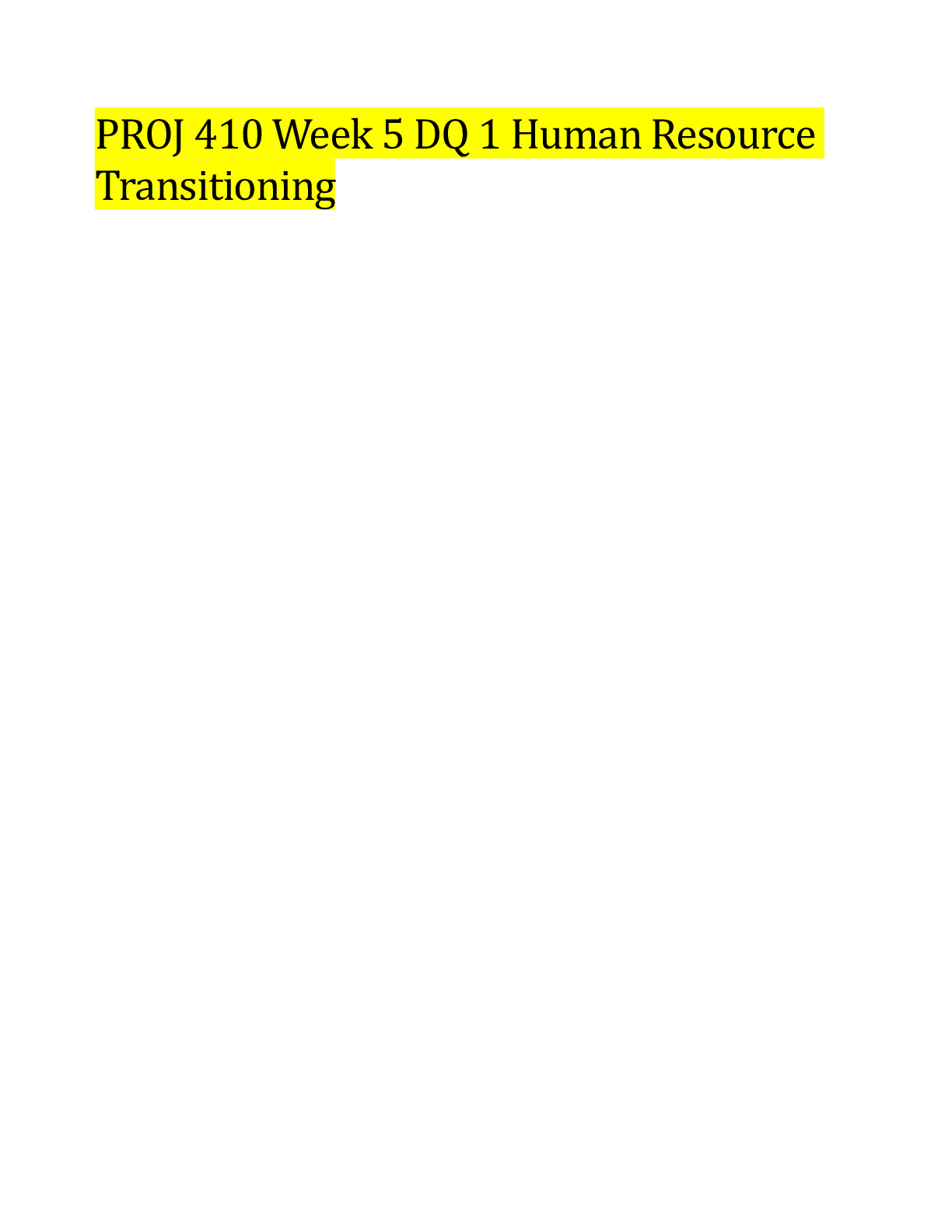
Reviews( 0 )
Document information
Connected school, study & course
About the document
Uploaded On
May 31, 2023
Number of pages
21
Written in
Additional information
This document has been written for:
Uploaded
May 31, 2023
Downloads
0
Views
54


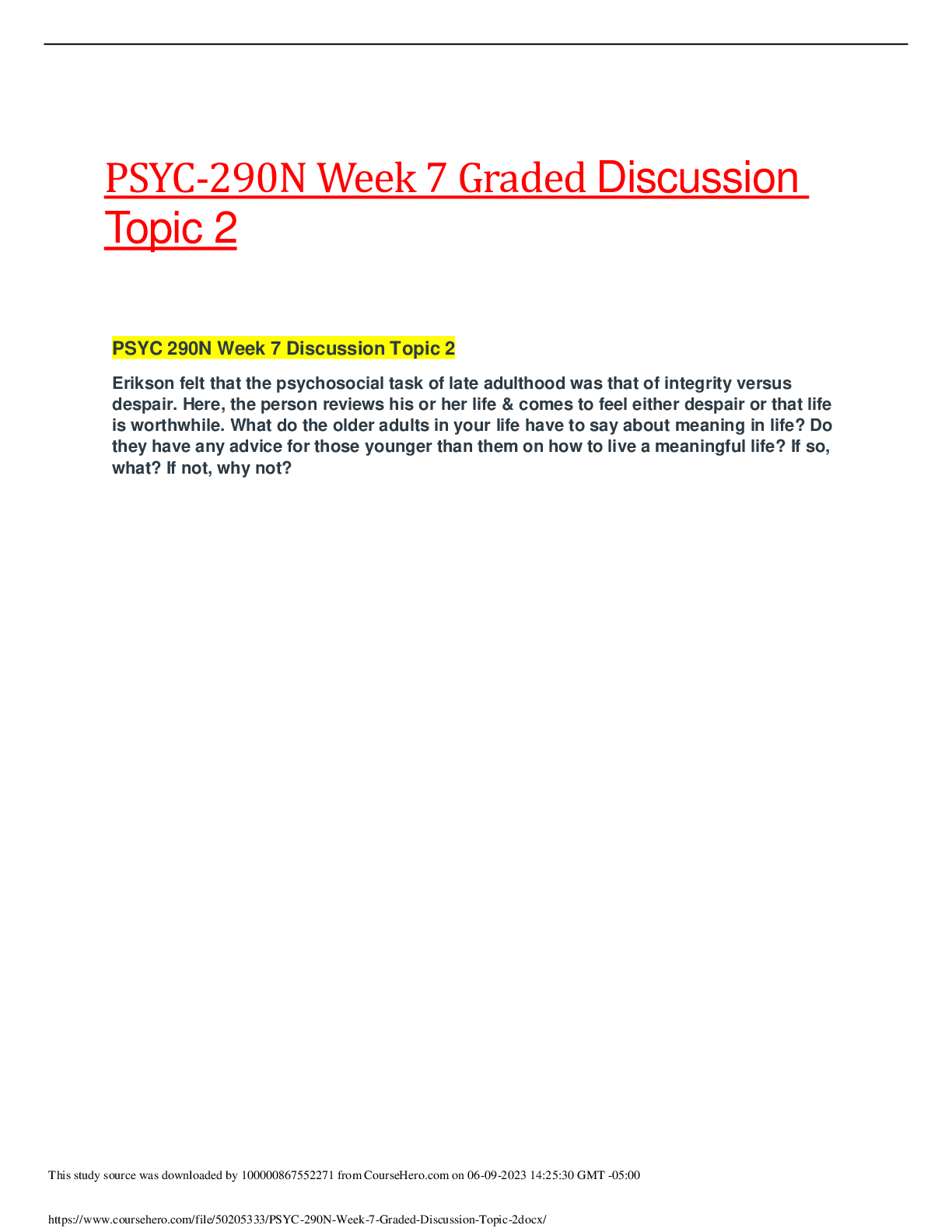
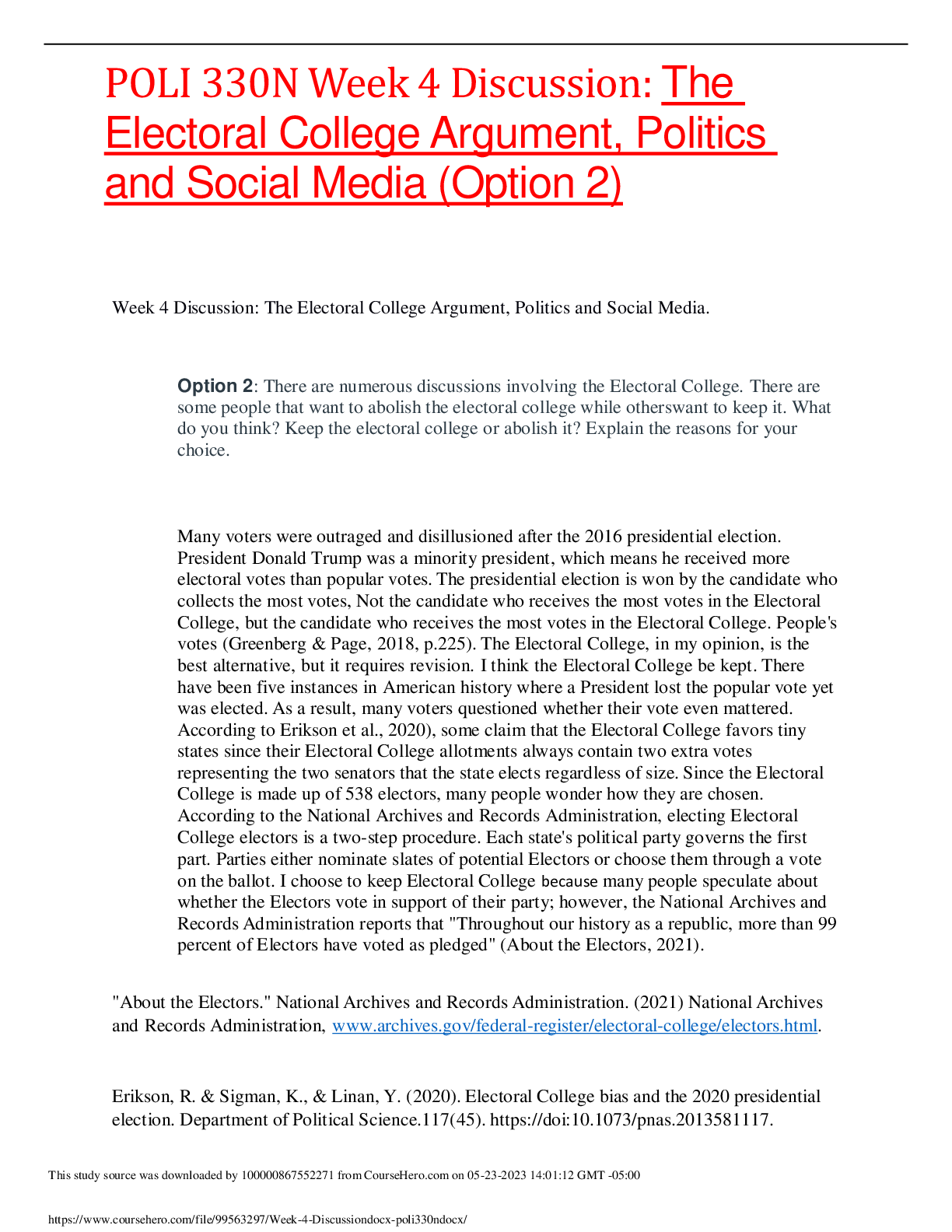
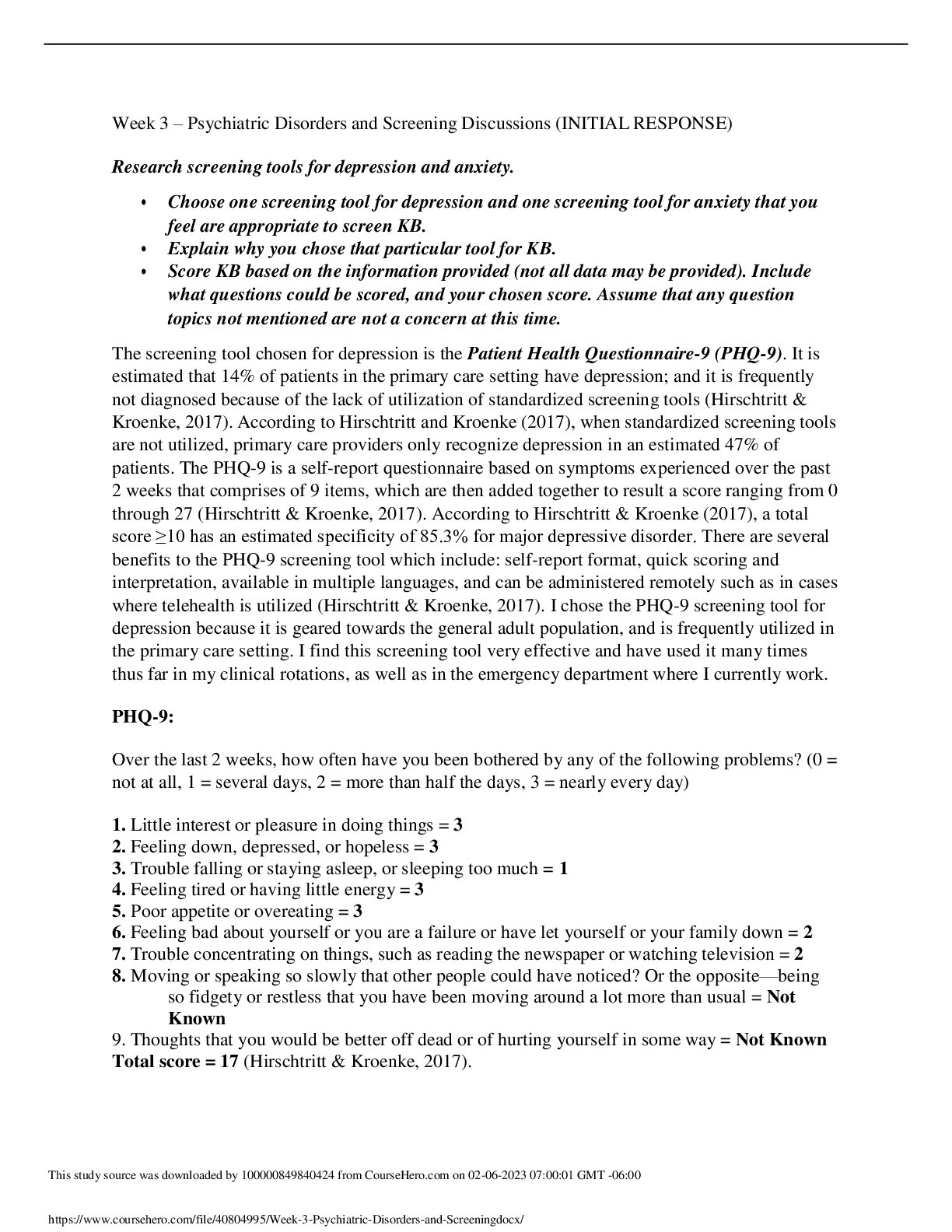
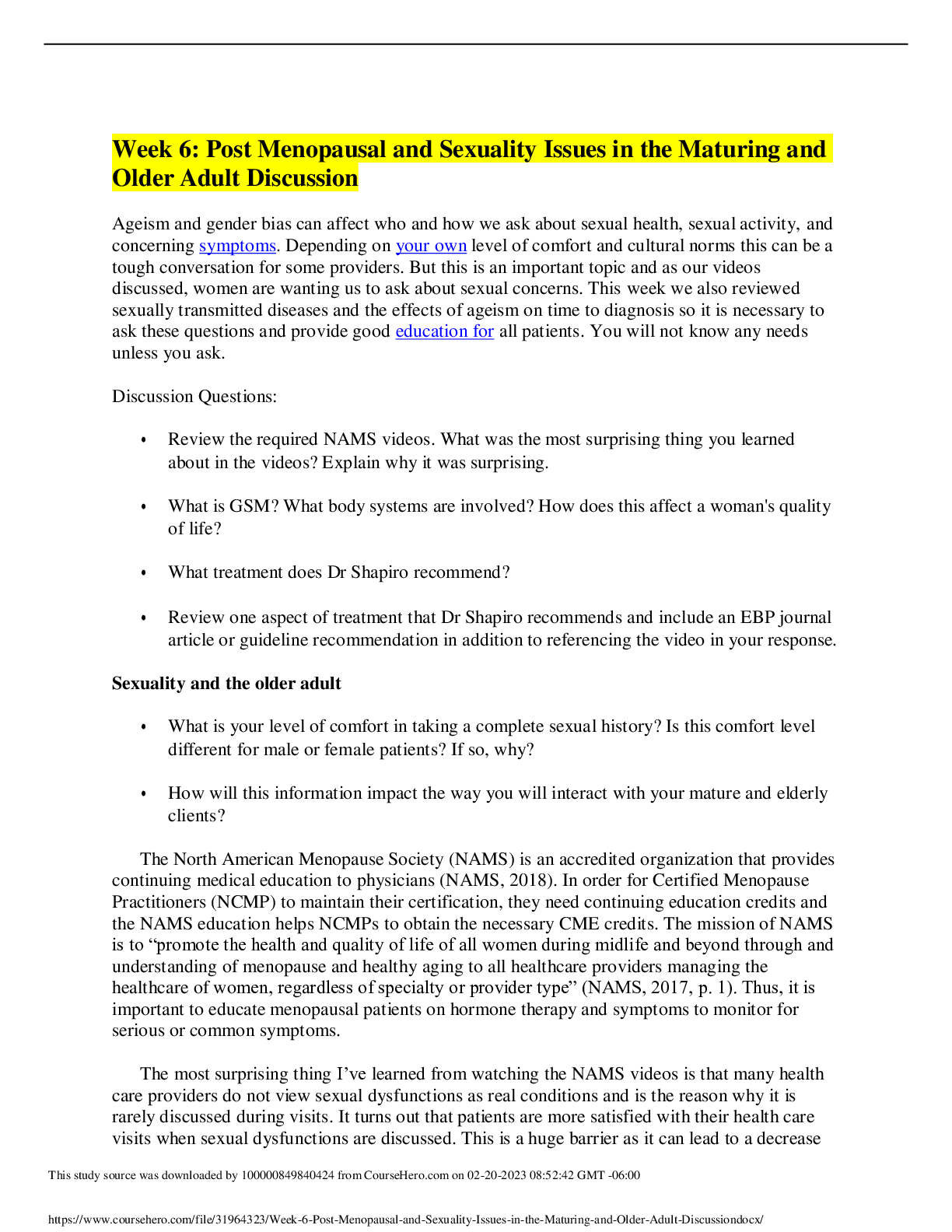
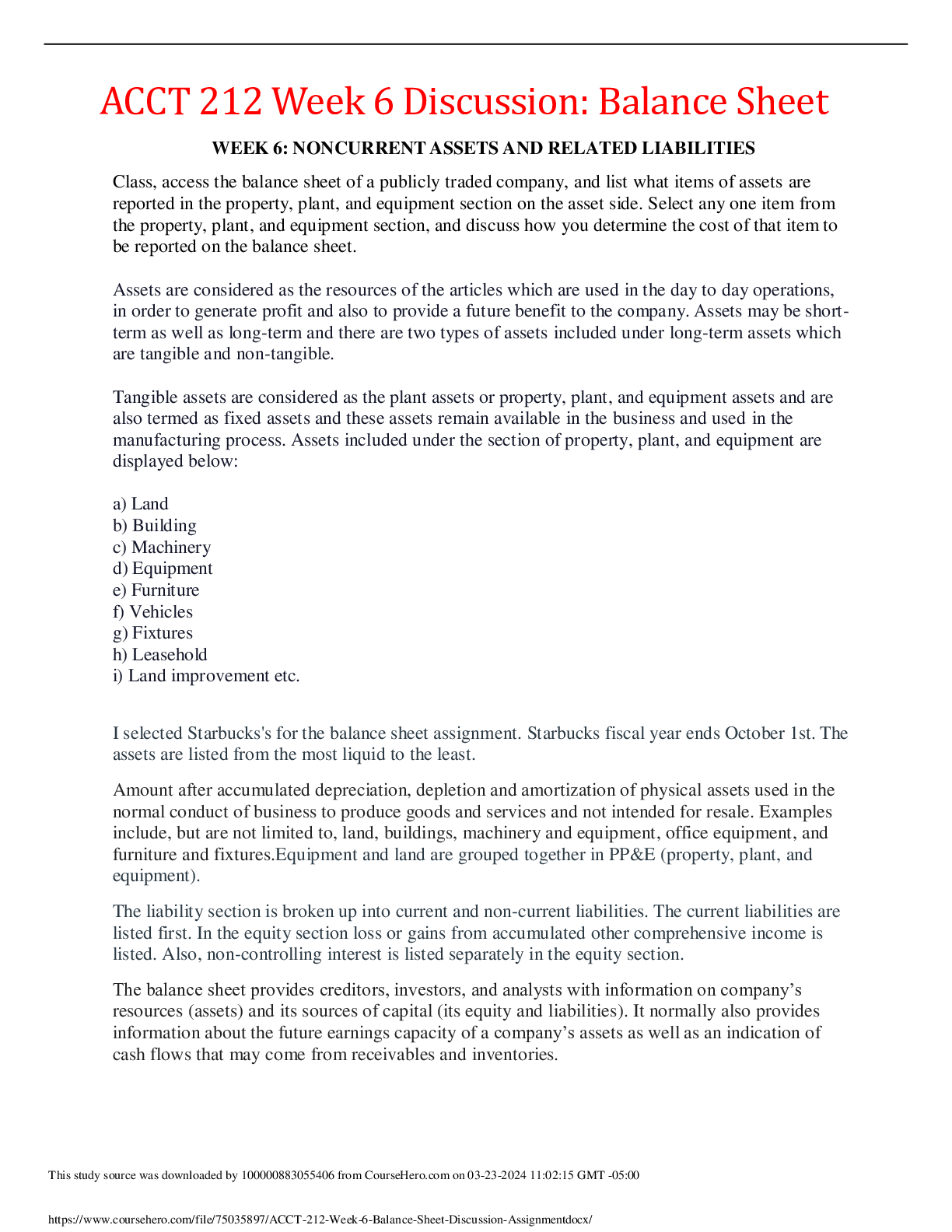
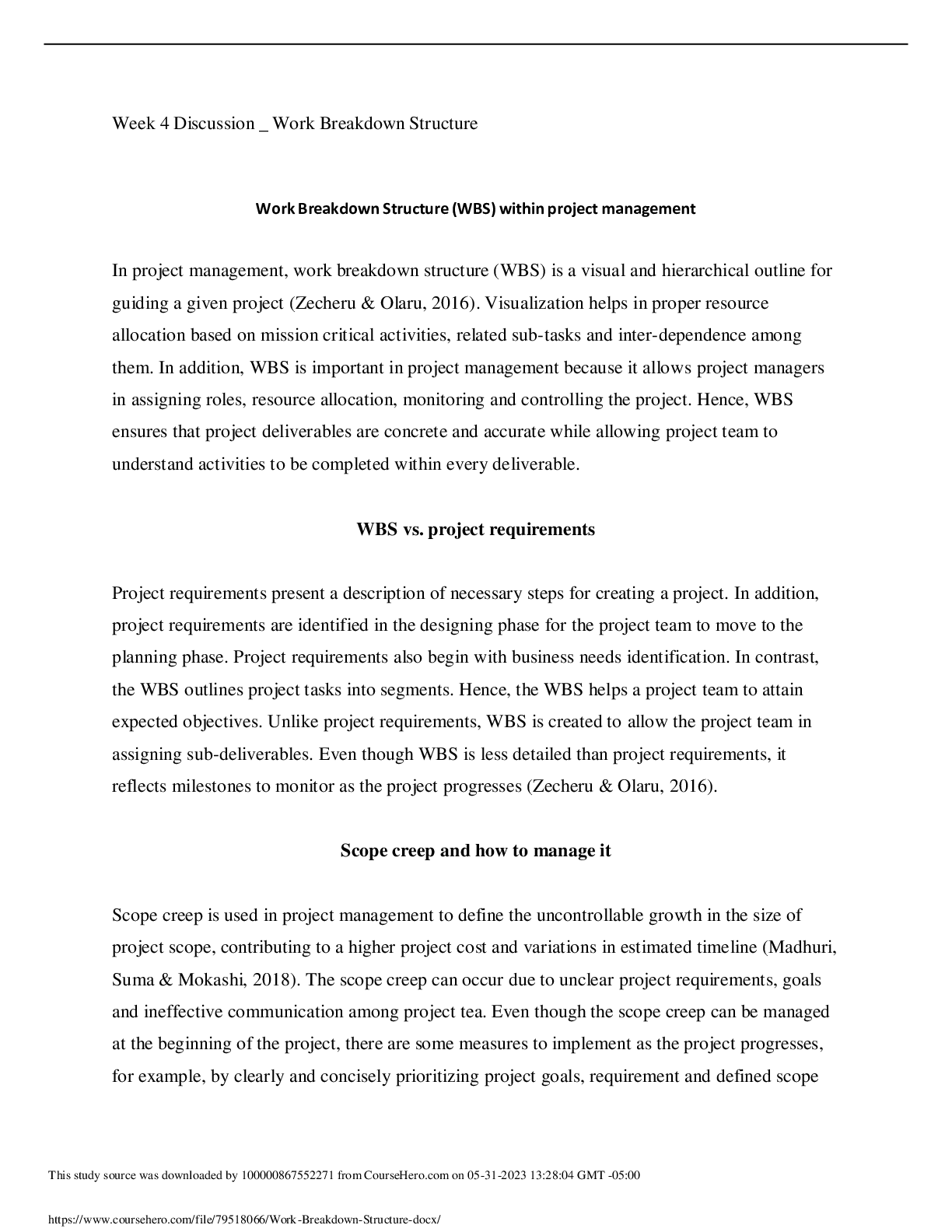

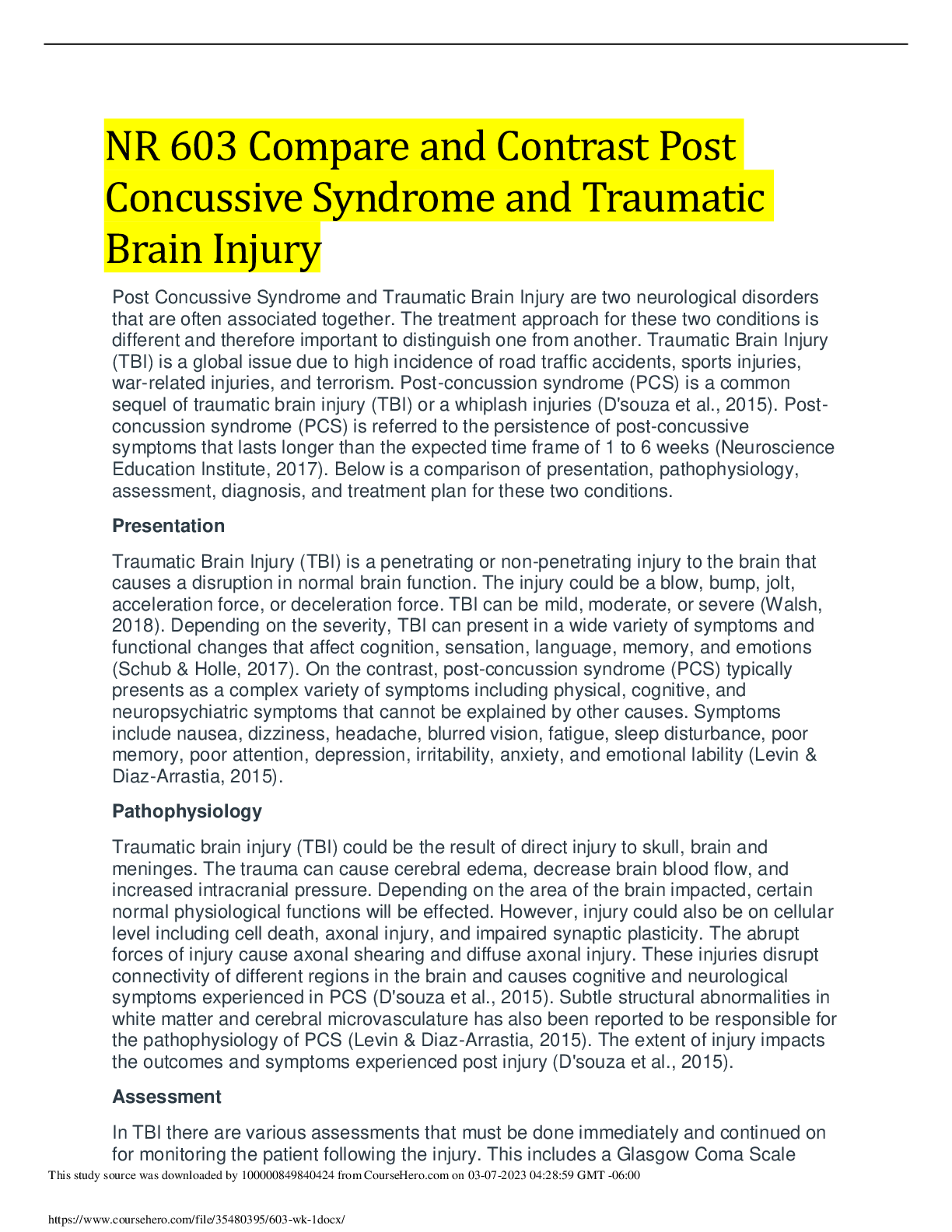

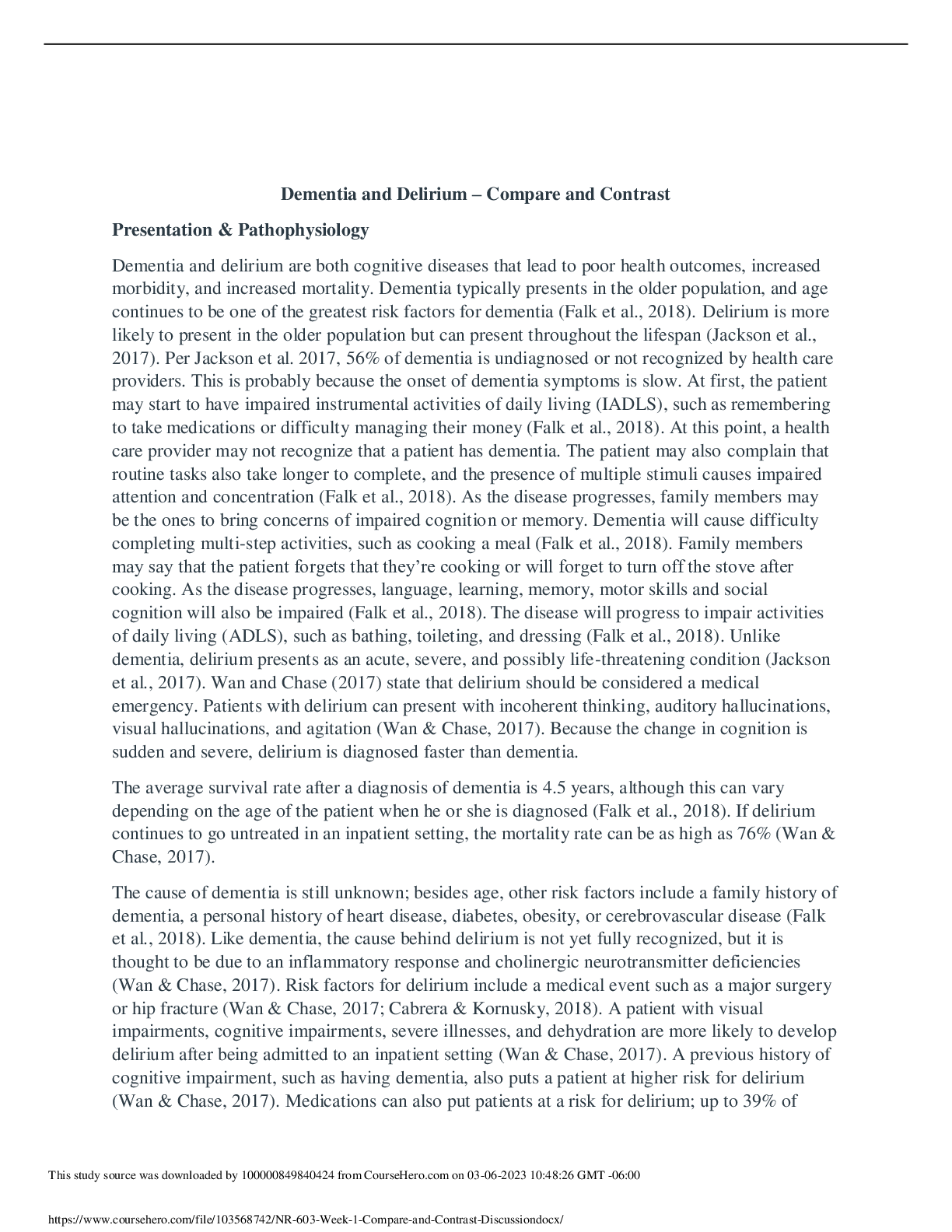

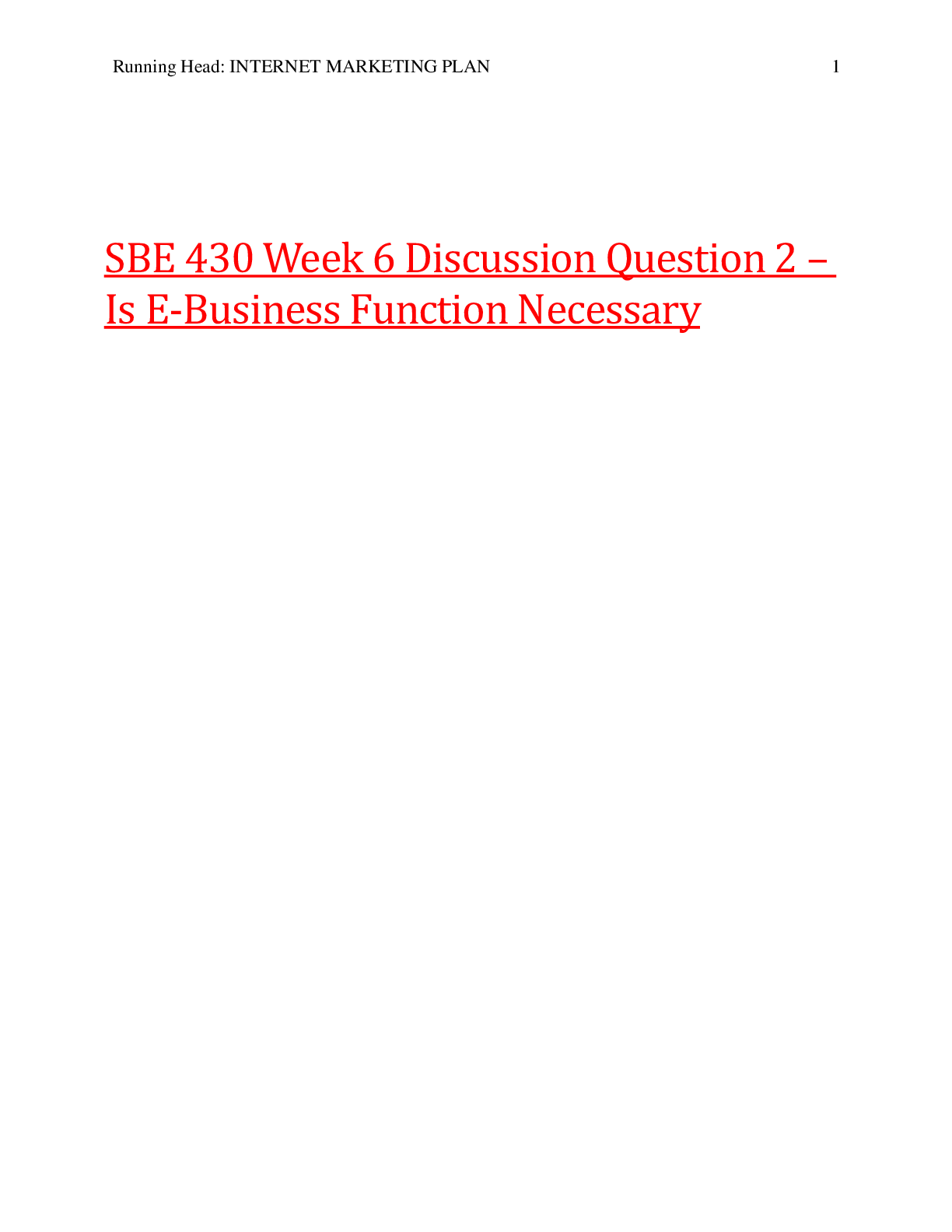
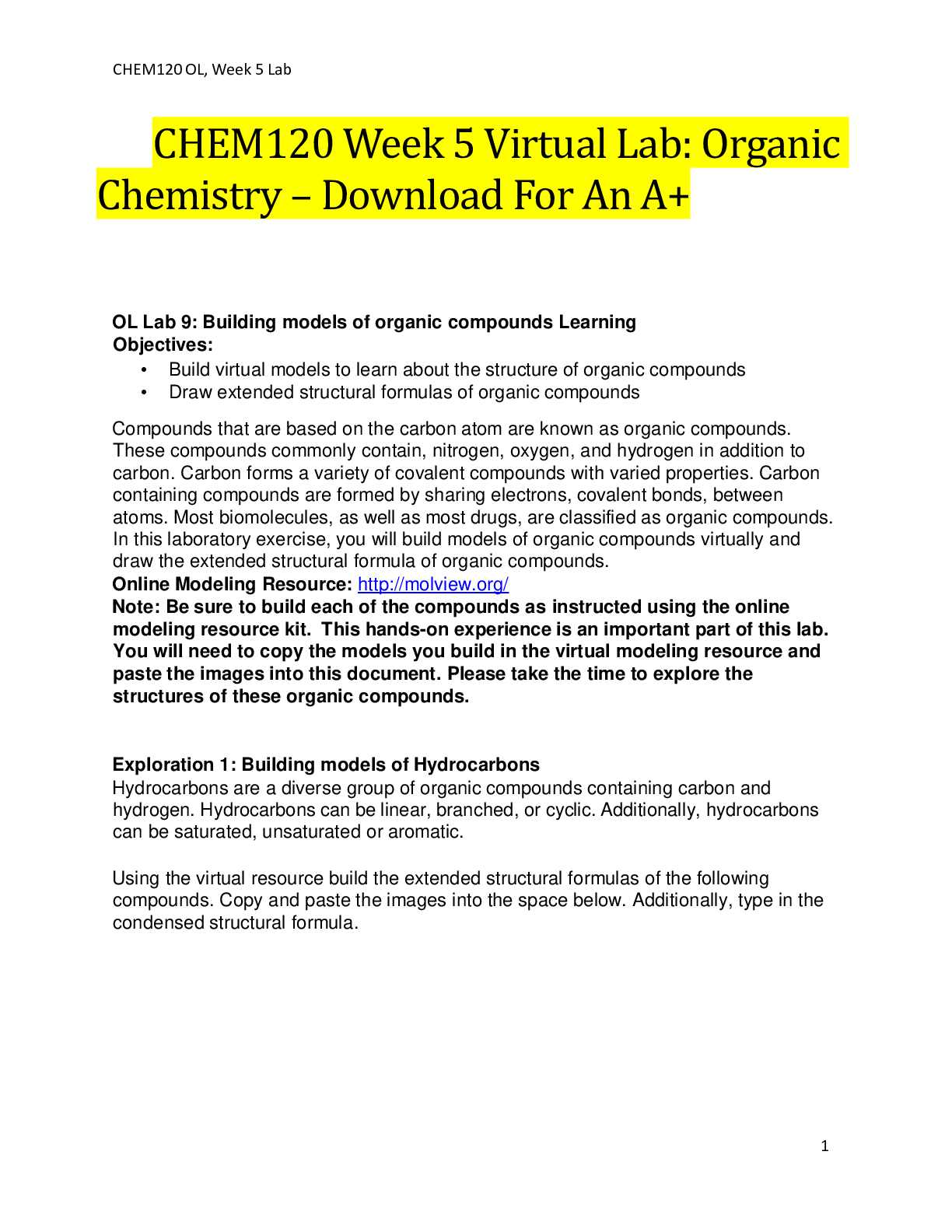
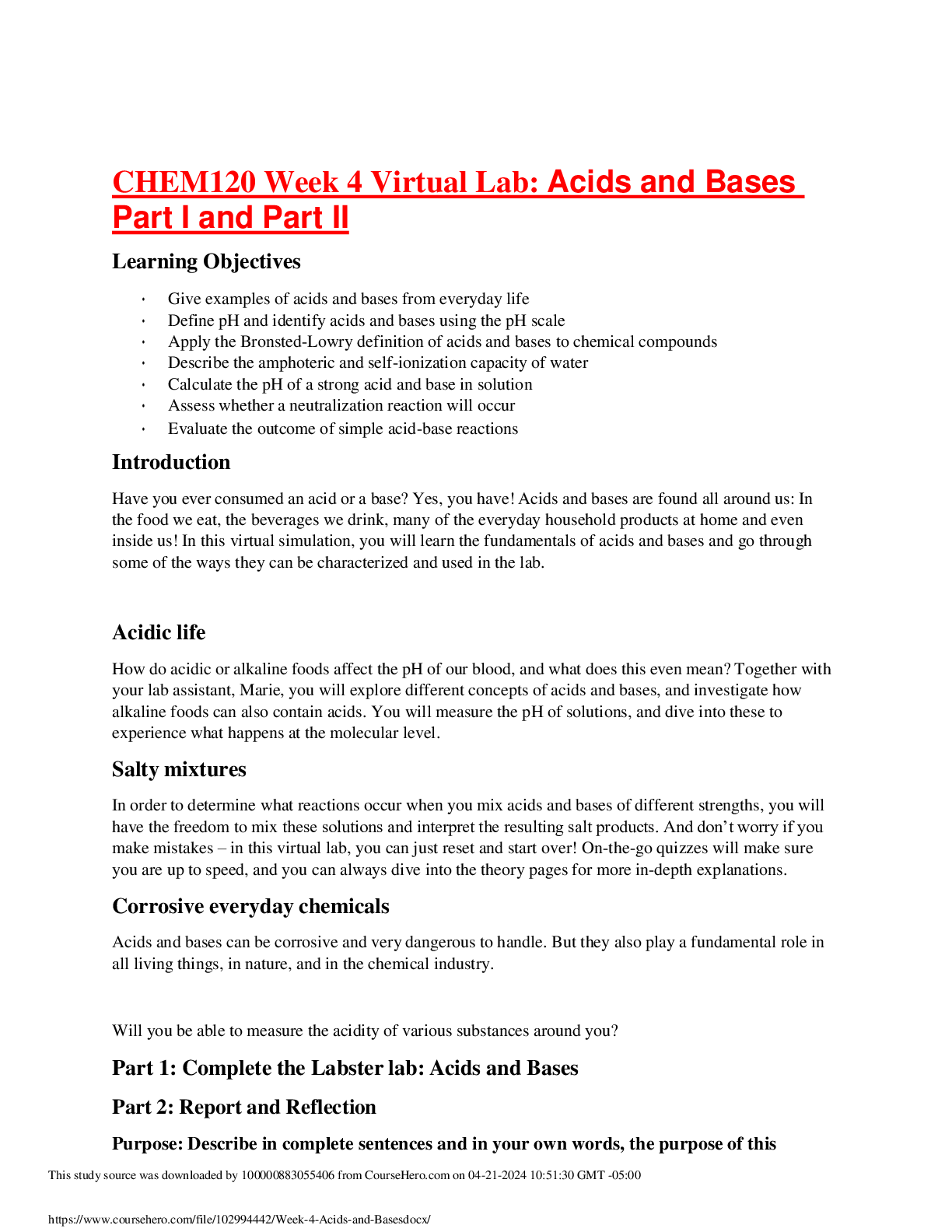
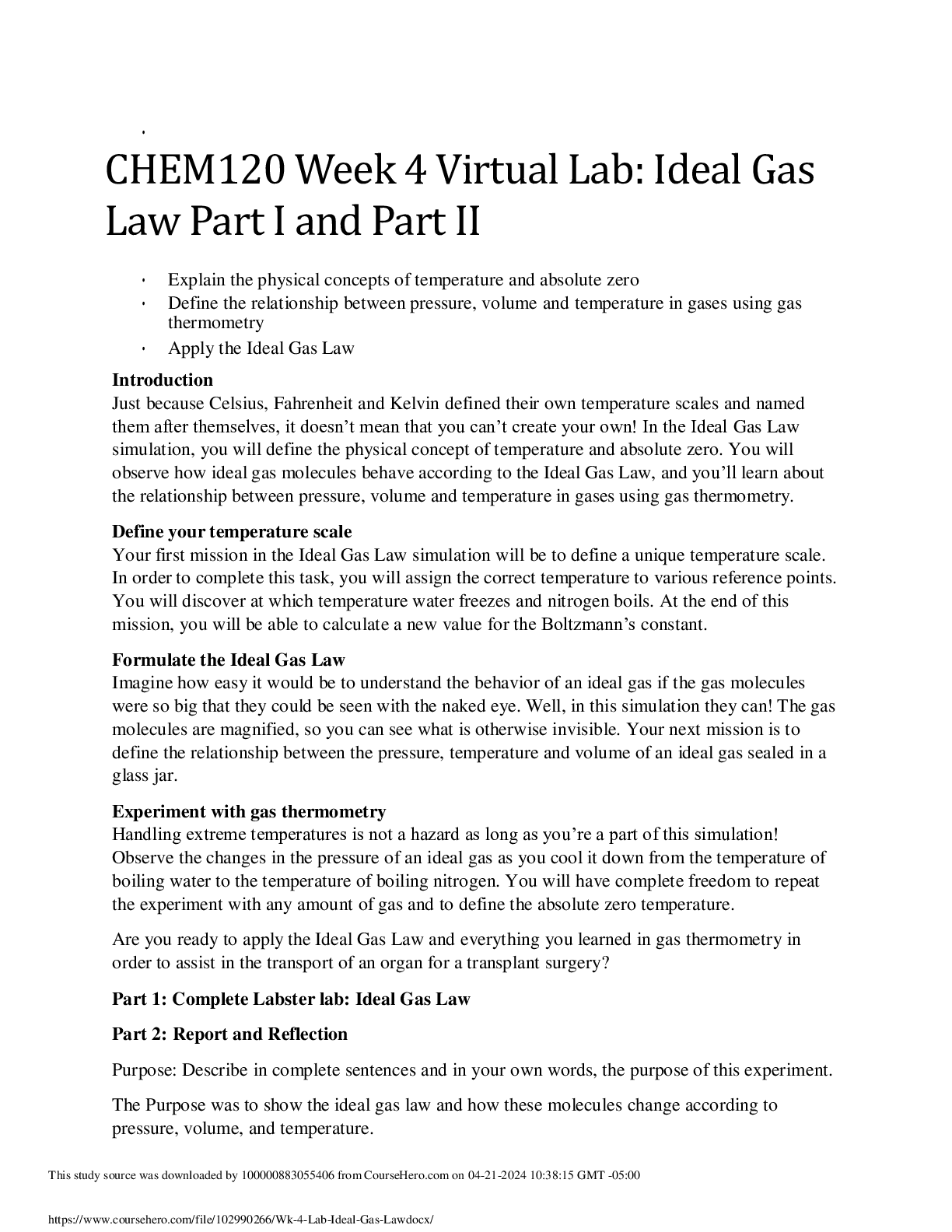
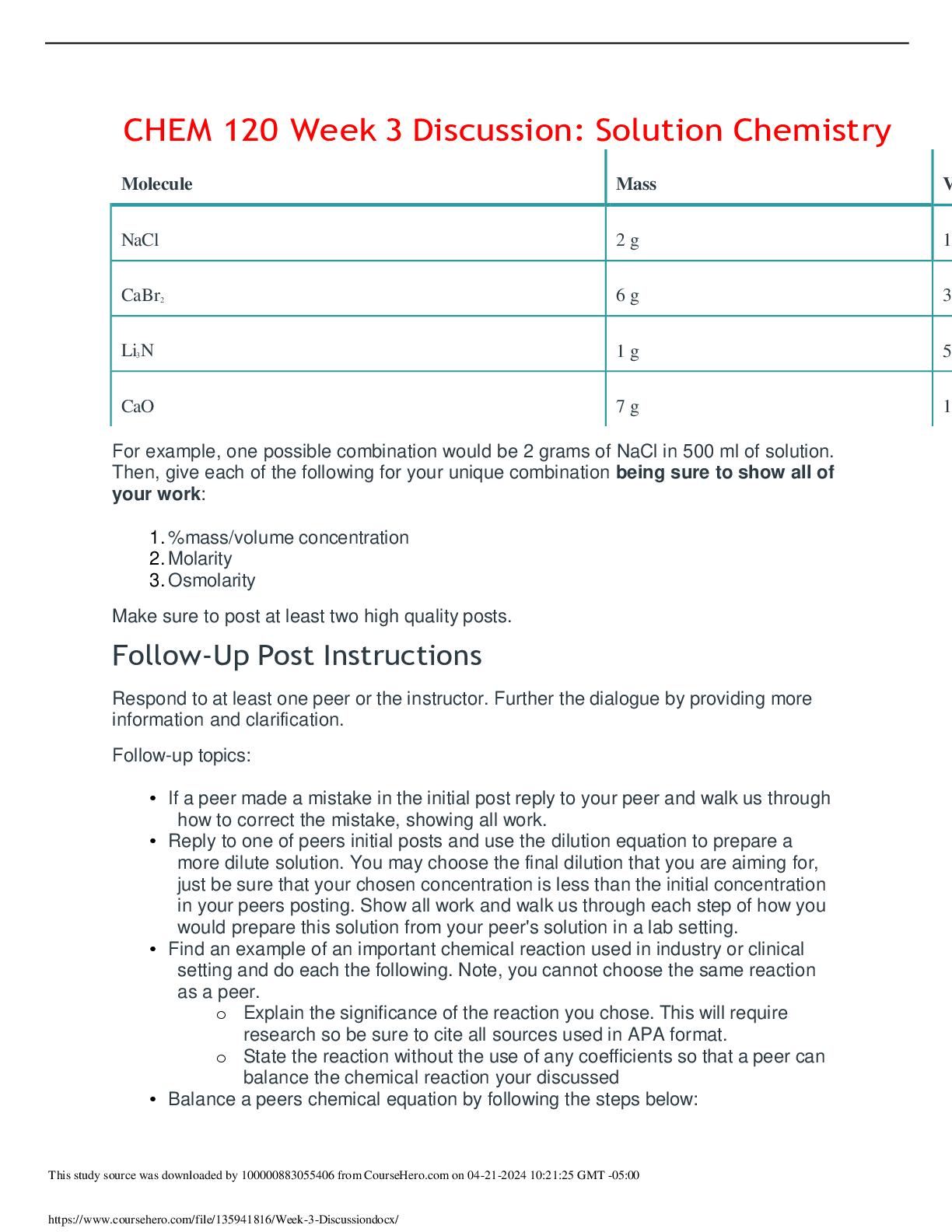
.png)
.png)
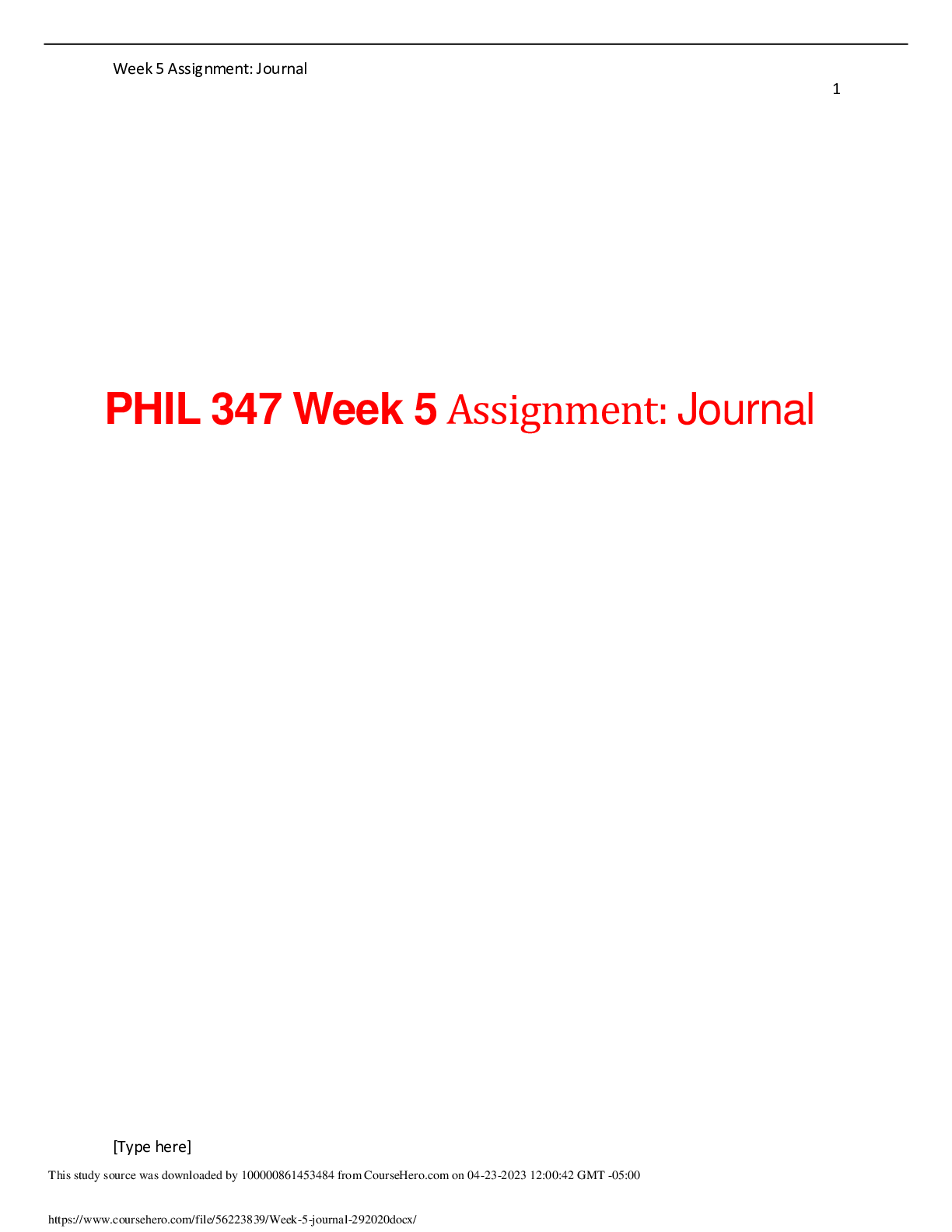
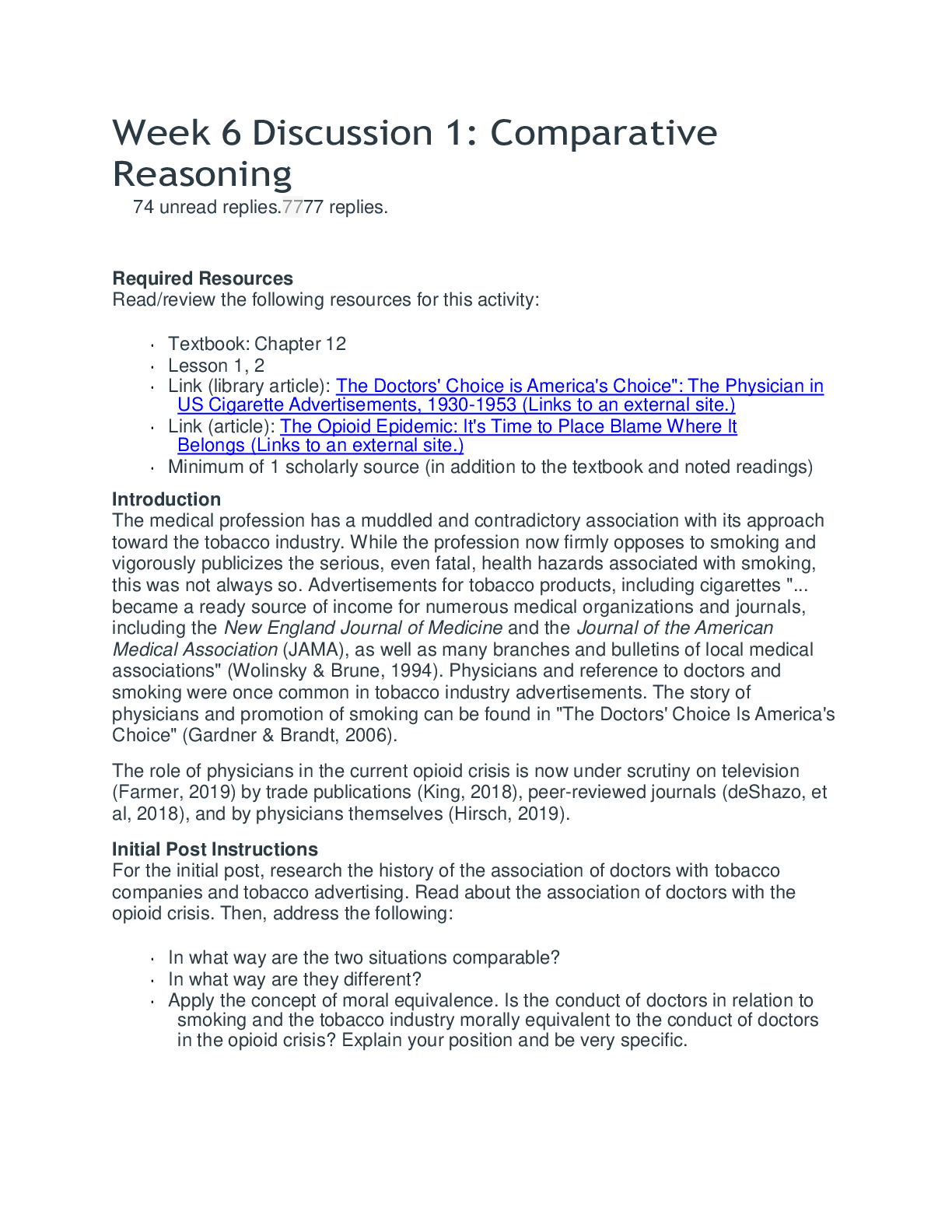
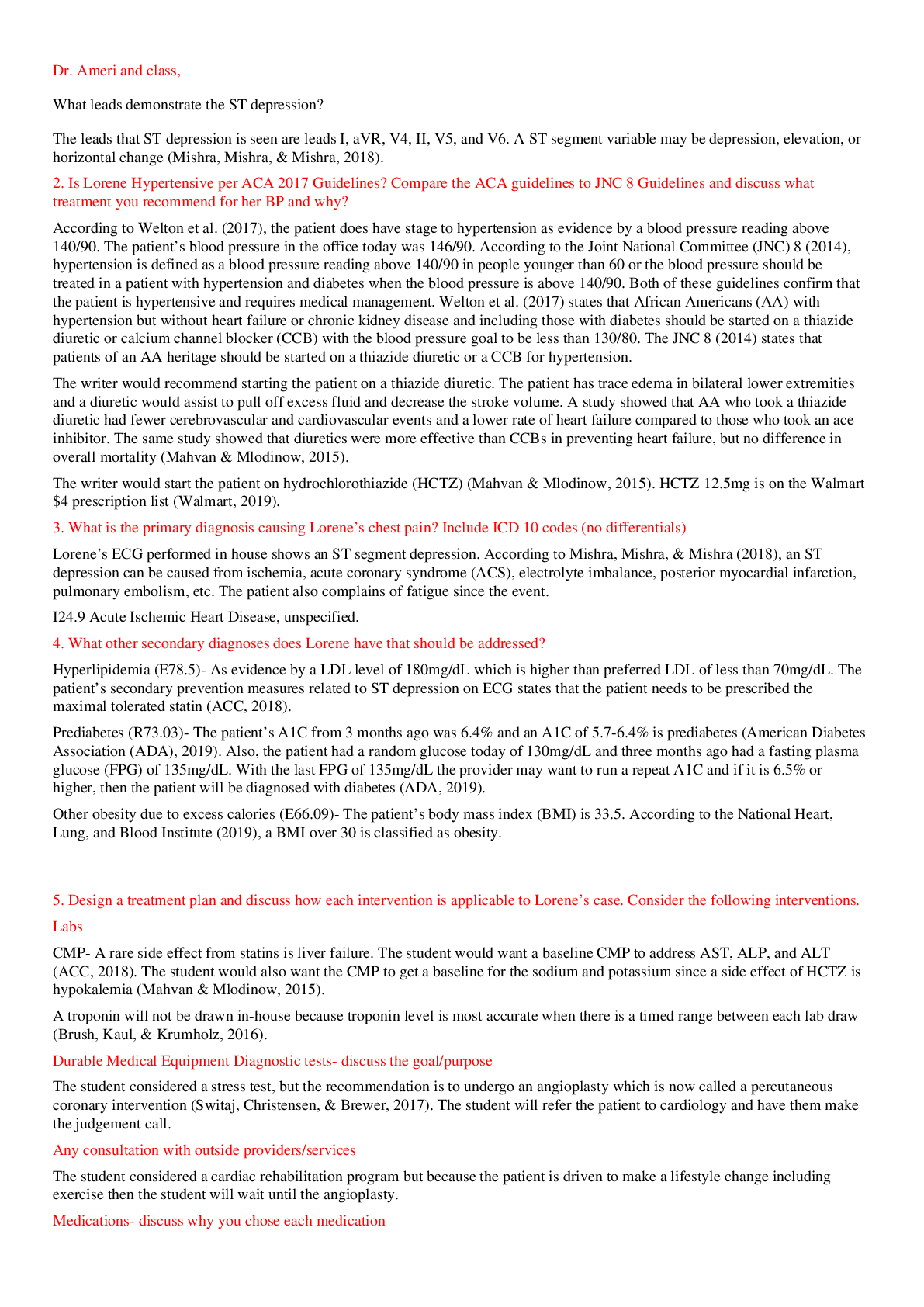


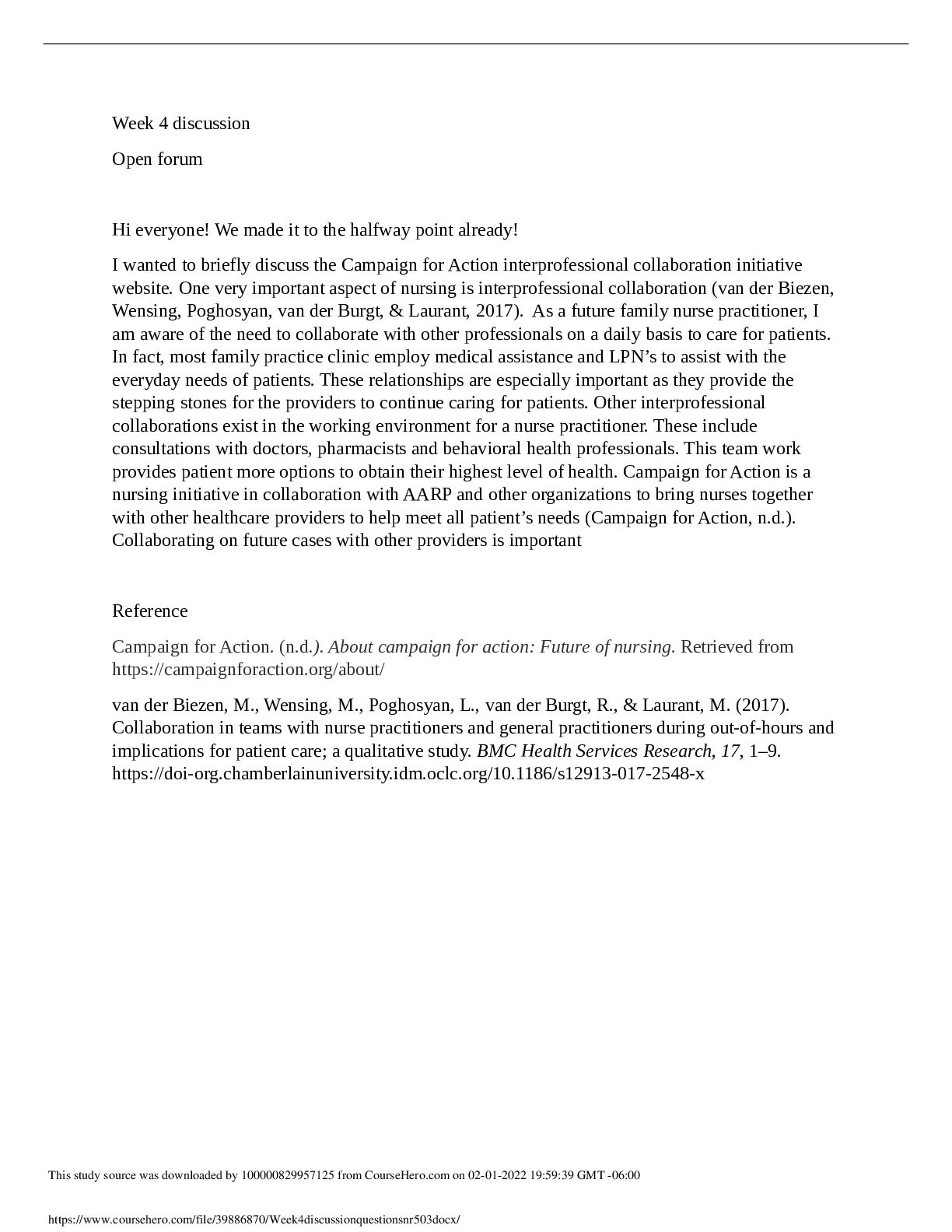
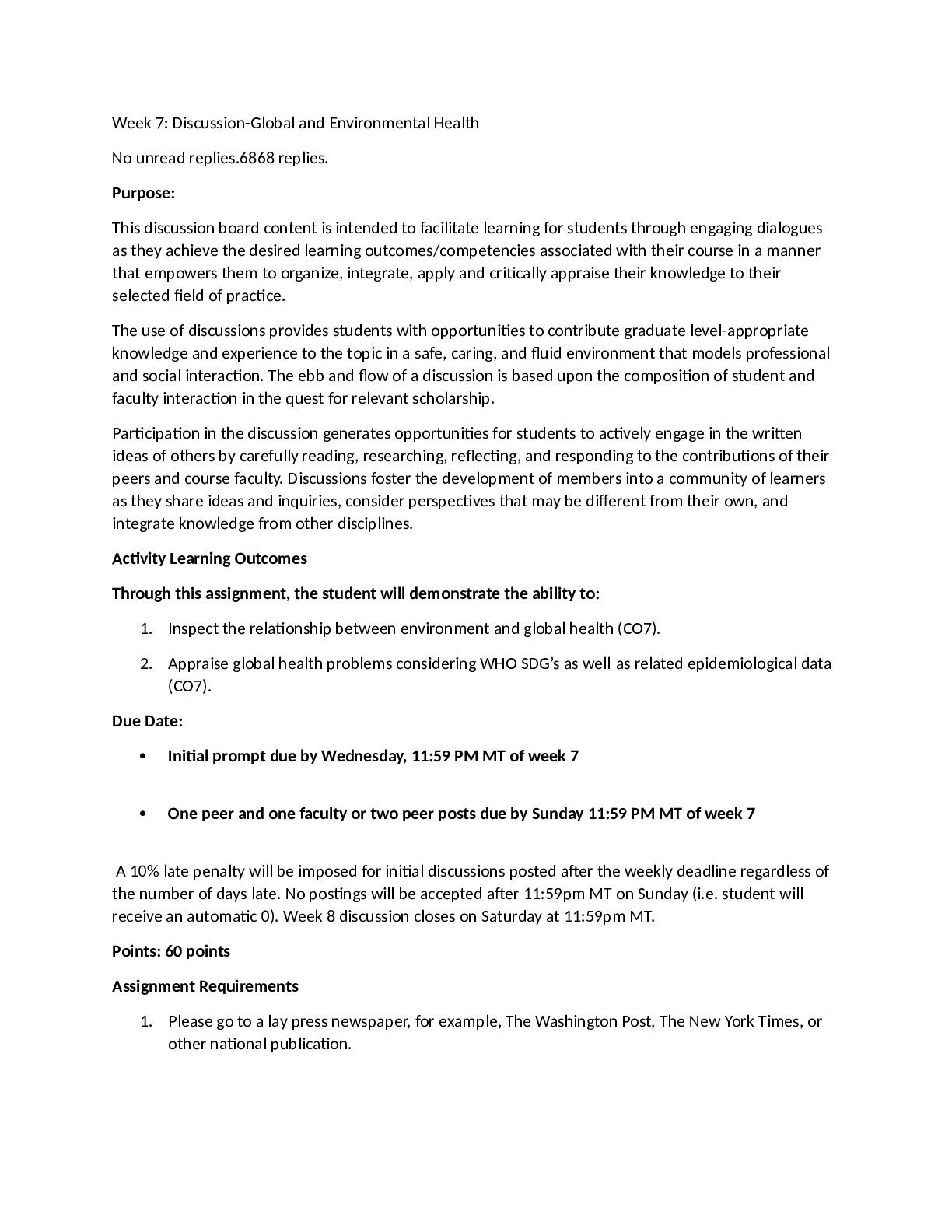
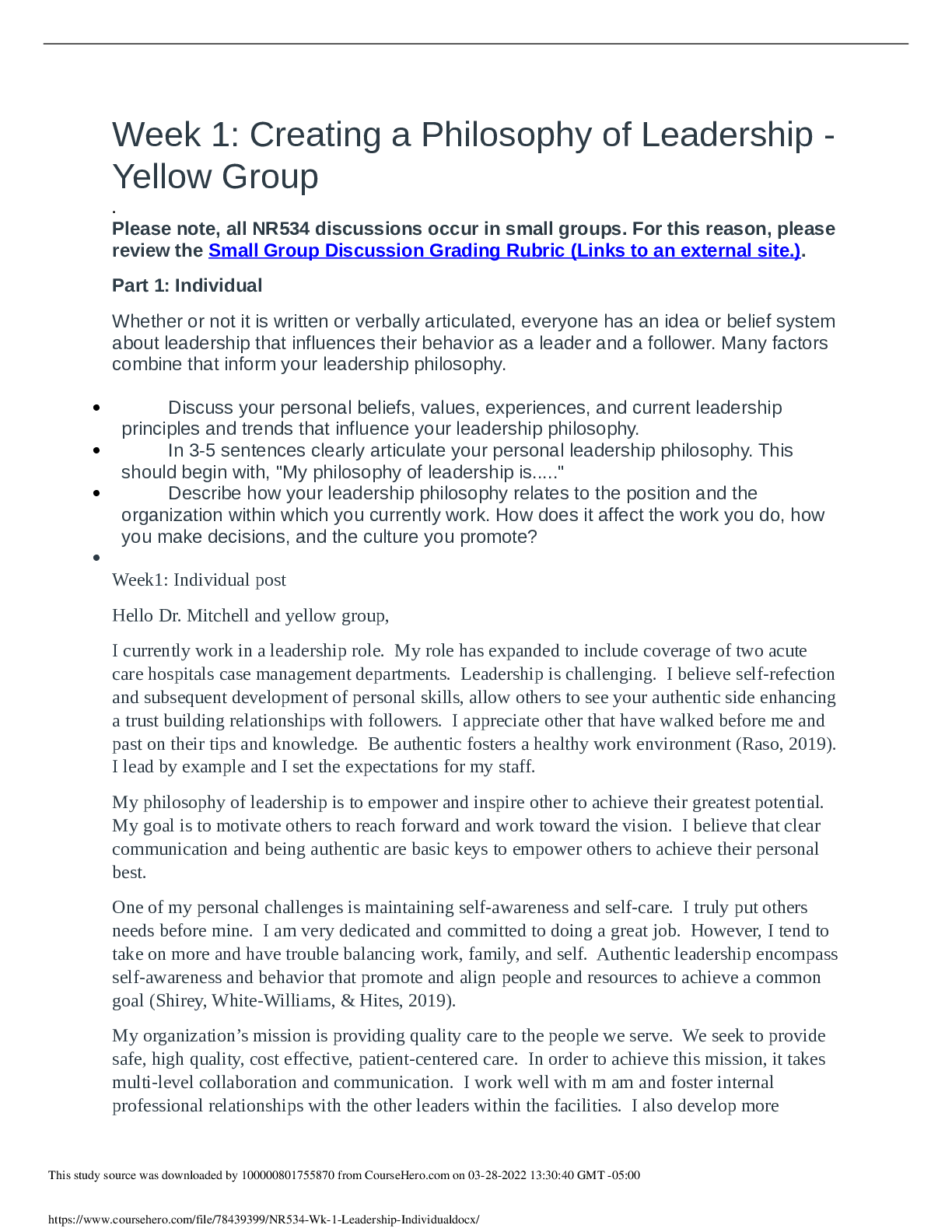
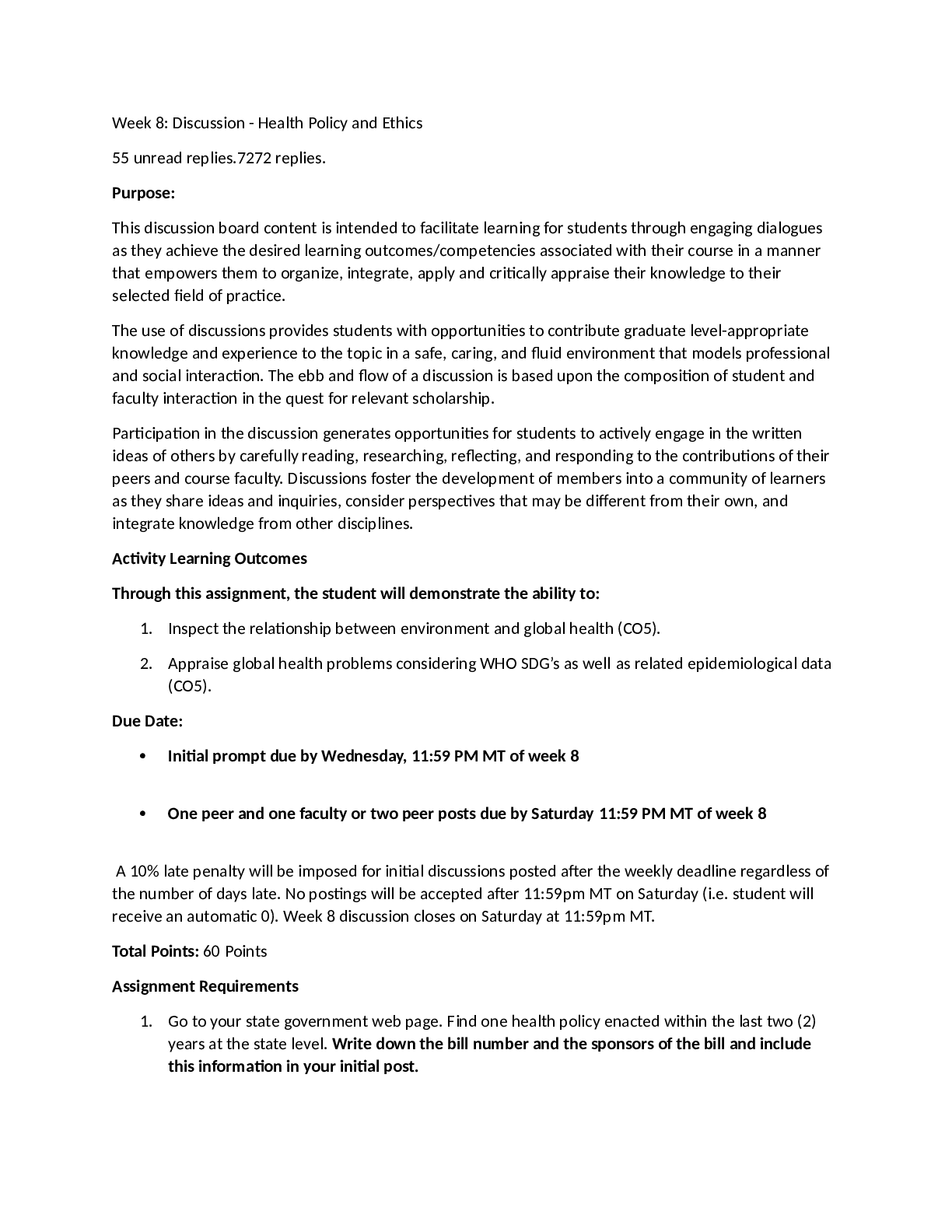

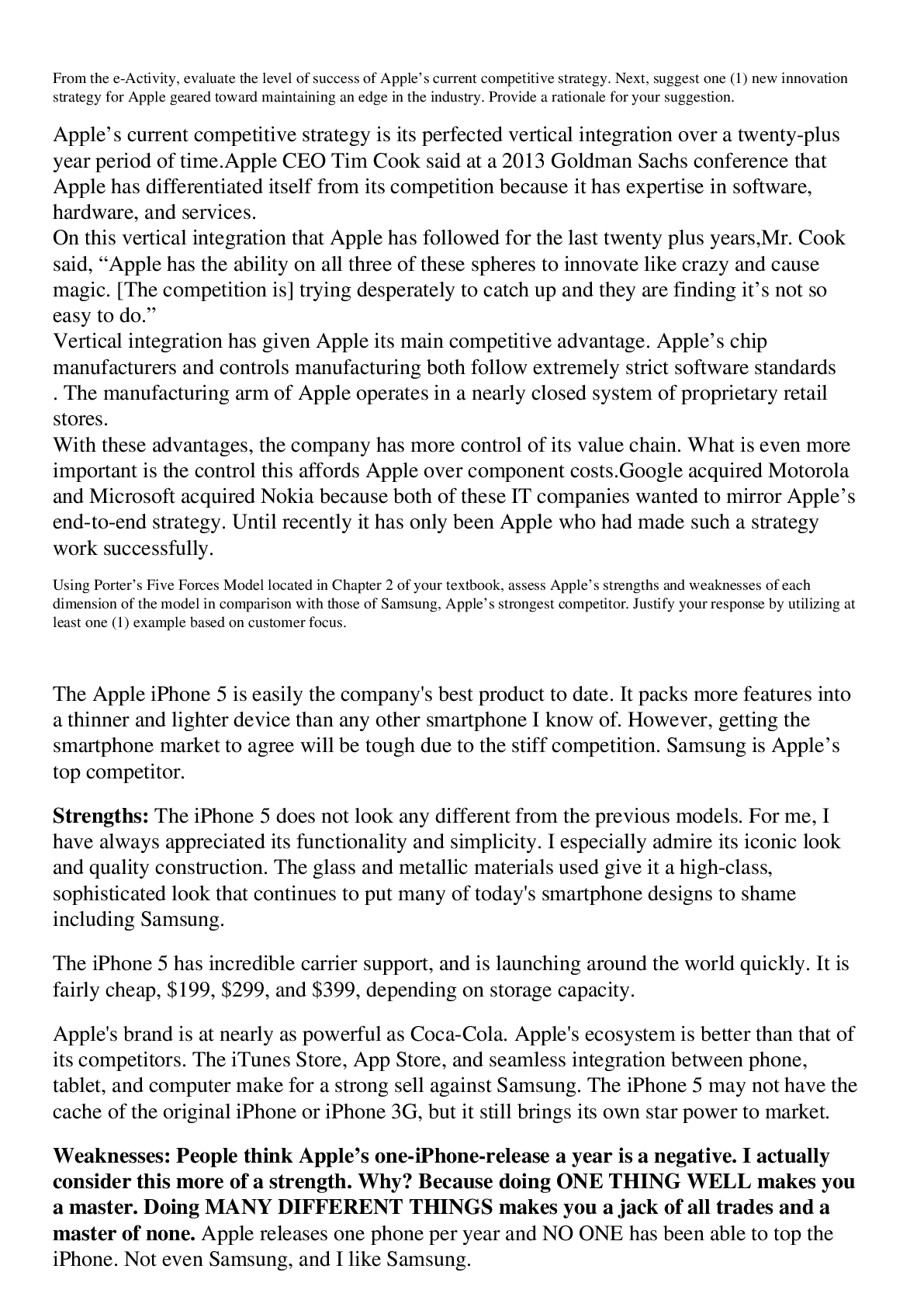
Growth and developmental patterns of toddlers.png)
